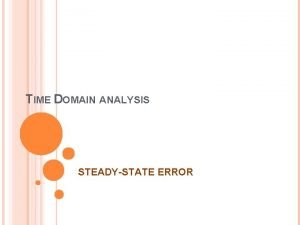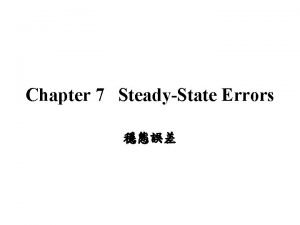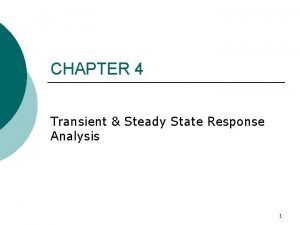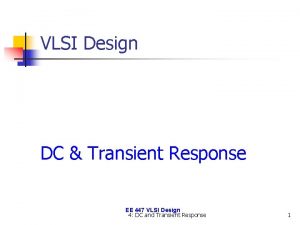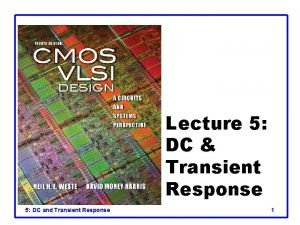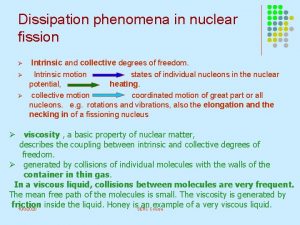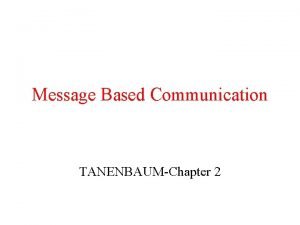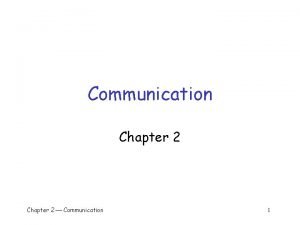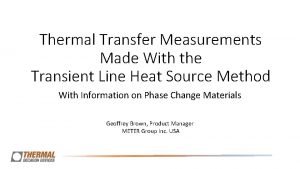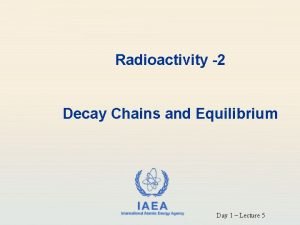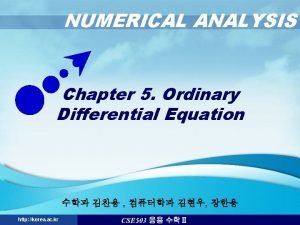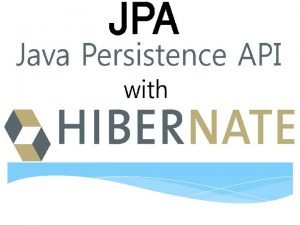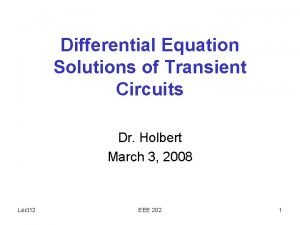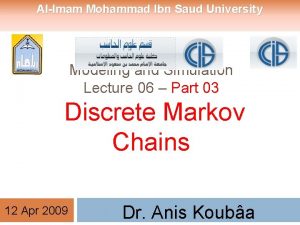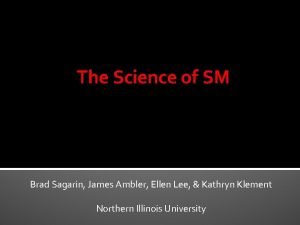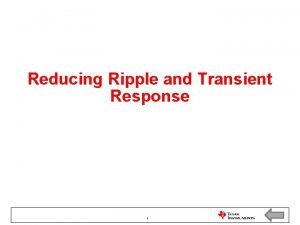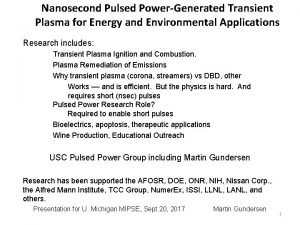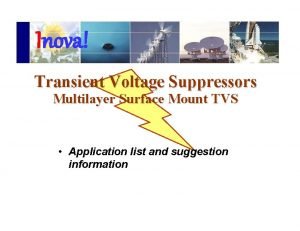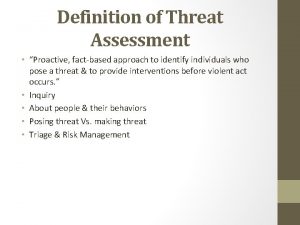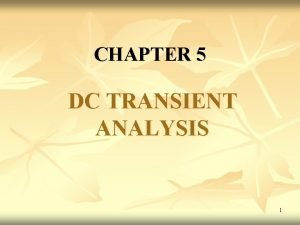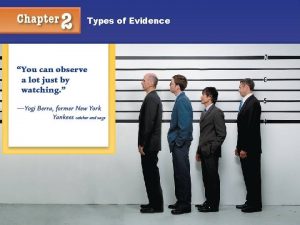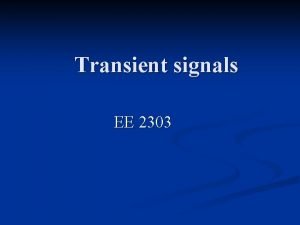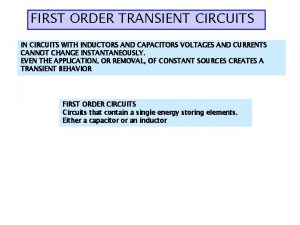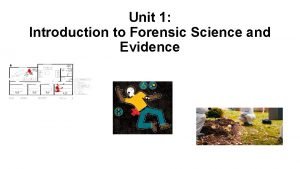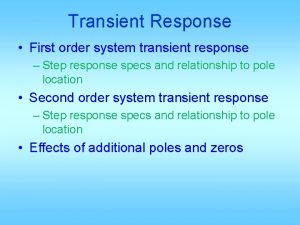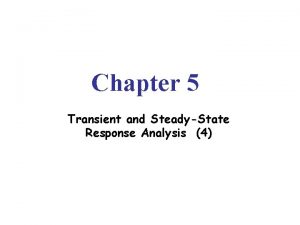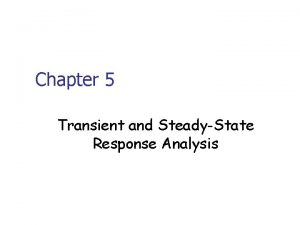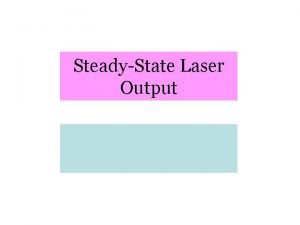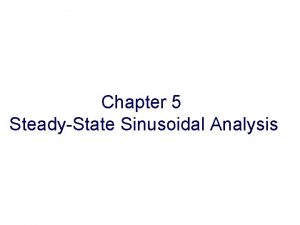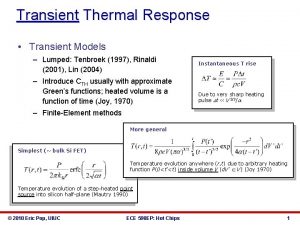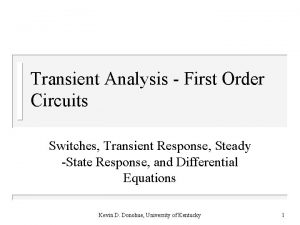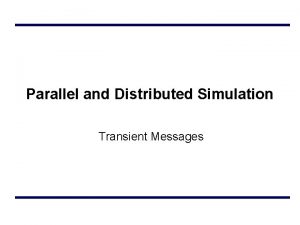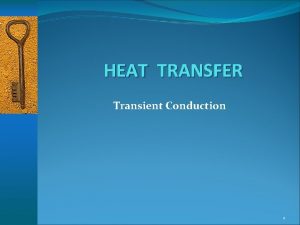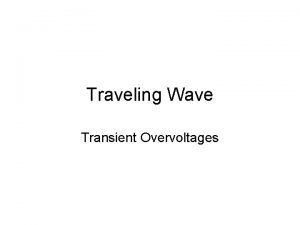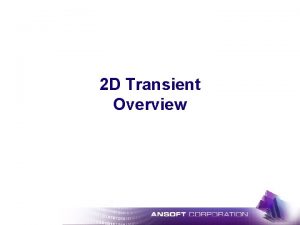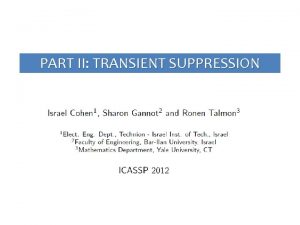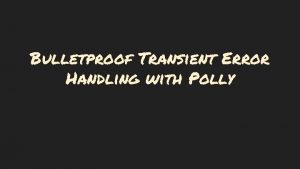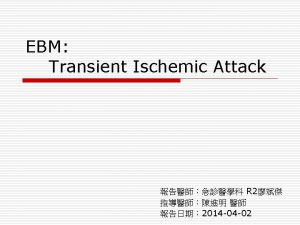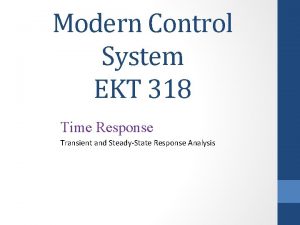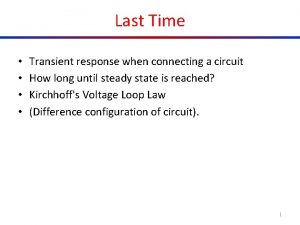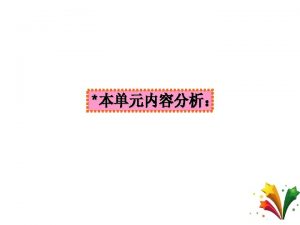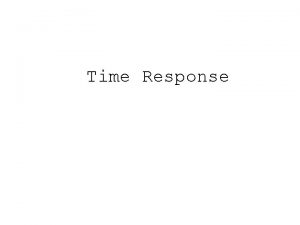Transient Response and SteadyState Response The time response






























- Slides: 30

Transient Response and Steady-State Response. The time response of a control system consists of two parts: - the transient response - and the steady-state response. By transient response, we mean that which goes from the initial state to the final state. By steady-state response, we mean the manner in which the system output behaves as t approaches infinity. Thus the system response c(t) may be written as c(t) = ctr(t) + css(t)

FIRST-ORDER SYSTEMS • Consider the first-order system shown in Figure 5– 1(a). Physically, this system may represent an RC circuit, thermal system, or the like • Unit-Step Response of First-Order Systems. Since the Laplace transform of the unit-step function is 1/s, substituting R(s)=1/s into Equation, we obtain




• for the unit-ramp input the output c(t) is • For the unit-step input, which is the derivative of unit-ramp input, the output c(t) is • Finally, for the unit-impulse input, which is the derivative of unit-step input, the output c(t) is

Second-Order Systems

• First-Order Systems: • Step Response:

Second-Order Systems • Servo System. The servo system shown in Figure consists of a proportional • controller and load elements (inertia and viscous-friction elements). Suppose that we wish to control the output position c in accordance with the input position r. The equation for the load elements is


• Step Response of Second-Order System. • The closed-loop transfer function of • the system shown • Which can be written as: • ; ; • This form is called the standard form of the second-order system • The dynamic behavior of the second-order • system can then be described in terms of • two parameters and ωn. ;





When z is appreciably greater than unity, one of the two decaying exponentials decreases much faster than the other, so the faster-decaying exponential term (which corresponds to a smaller time constant) may be neglected. That is, if –s 2 is located very much closer to the jω axis than –s 1. which means s 2 <<s 1 , then for an approximate solution we may neglect –s 1





• Pole locations determine time response








• EXAMPLE 5– 2 For the system shown in Figure , determine the values of gain K and velocity-feedback constant Kh so that the maximum overshoot in the unit-step response is 0. 2 and the peak time is 1 sec. With these values of K and Kh, obtain the rise time and settling time. Assume that J=1 kg-m 2 and B=1 N-m/ rad/ sec. • Example: When the system shown in Figure (a) is subjected to a unit-step input, the system output responds as shown in Figure (b). Determine the values of K and T from the response curve.

• Example: Determine the values of K and k of the closed-loop system shown in Figure so that the maximum overshoot in unit-step response is 25% and the peak time is 2 sec. Assume that J=1 kg-m 2.
 Steadystate error
Steadystate error Unity feedback system
Unity feedback system Transient and steady state response
Transient and steady state response Transient response in vlsi
Transient response in vlsi Rw + vo c inverter transient response vod inverte...
Rw + vo c inverter transient response vod inverte... Signal step
Signal step Transient time
Transient time Example of elapsed time
Example of elapsed time Message oriented architecture
Message oriented architecture Persistent synchronous communication
Persistent synchronous communication Stereotypic movement disorder
Stereotypic movement disorder Transient line source apparatus
Transient line source apparatus Transient equilibrium formula
Transient equilibrium formula Adam moulton method
Adam moulton method @transient in jpa
@transient in jpa Natural solution
Natural solution Examples of conditional evidence
Examples of conditional evidence Conditional evidence
Conditional evidence Alimam
Alimam Transient hypofrontality
Transient hypofrontality Ripple transient
Ripple transient Transient plasma systems
Transient plasma systems Surface mount transient voltage suppressor
Surface mount transient voltage suppressor Transient threat definition
Transient threat definition Who
Who Dc transient analysis
Dc transient analysis Transient evidence examples
Transient evidence examples Transitional signals
Transitional signals First order transient circuit
First order transient circuit Code of conduct for healthcare support workers
Code of conduct for healthcare support workers Bobby poole
Bobby poole
